Purulia, the land of red Palash, is also famous for the Chau Dance, a form of mask dance that gets recognition worldwide in recent days. The large colourful masks, the brisk acrobatic movements, the reverberating sound of Dhamsa and the sweet smell of Mahua flowers in the air – everything compensates each other in the tribal soil of Purulia. If you have ever been to Purulia, the border state of West Bengal, do not forget to experience this unique open-air dance performance, a mixture of martial, tribal, and folk traditions in India.
Also read: Trip to Ayodhya Hills in Purulia | A Perfect Weekend Destination from Kolkata
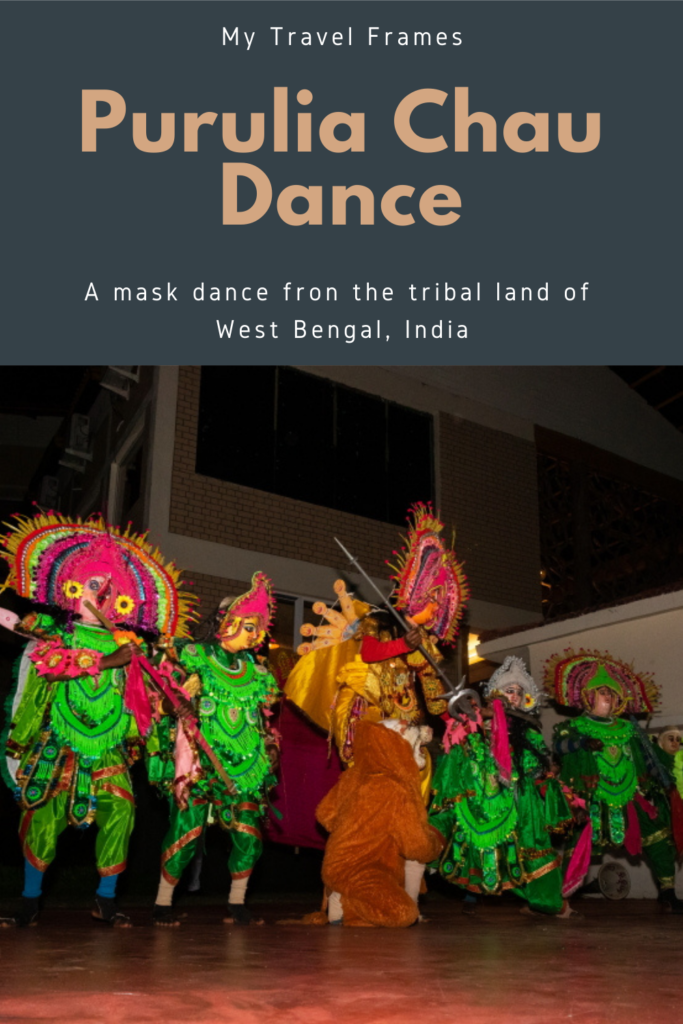
Pin this image to save the link and read the post later!!
Table of Contents
About
Chau Dance is a semi-classical dance form originally practised by tribes in the Chotonagpur Plateau area. Presently, there are three different forms of this art in three adjacent states of India – West Bengal, Jharkhand and Odisha. The three subgenres are – Purulia Chau, Seraikella Chau and Mayurbhanj Chau named according to the district where these dance forms are practised. Of these three, Seraikella Chau is most evolved towards a classical dance form, whereas Purulia Chau is still close to its original form. It is more of an acrobatic dance drama than a conventional way of art.
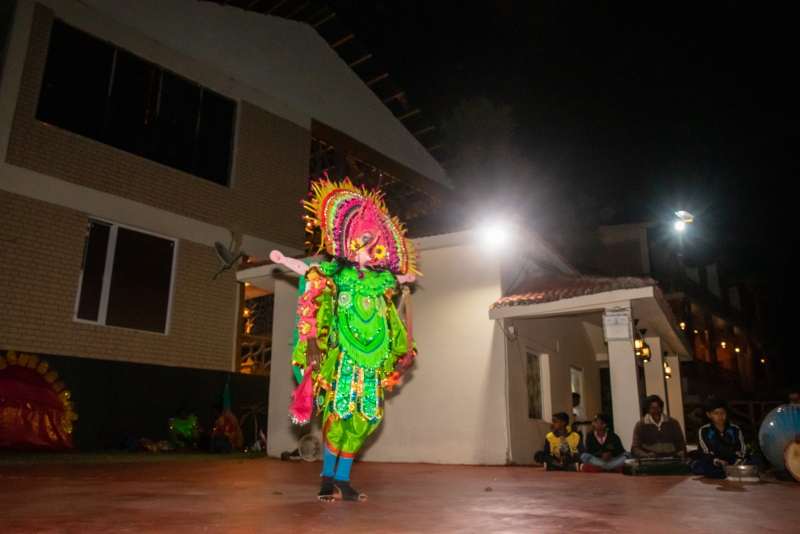
History
The exact timeframe since when Chau Dance was practised is not known to anyone neither mentioned in any literature. The forested hills of Chotonagpur inhabited by many tribes were inaccessible to outsiders until the Hindu chieftains started to conquer these areas and came to know about the indigenous cultures of these tribes. Since then, Chau dance came a long way and moulded itself with the influence of Hinduism. Purulia Chau is the nearest to its native form. It lacks patronage compared to the other two subgenres, which helped it maintain its indigenous nature and separated it considerably from the other two.
According to historians and folklorists, Mundas, a tribe settled at the border of West Bengal and Chotonagpur area, performs Chau dance to worship the Sun God during summer to bring rain for harvesting. Mundas are also known as “Bhumiji”, meaning “born of the soil”. Locally they are called Muras and take surnames of Sardars. They were also good hunters and fought against the British Government in Chuar Rebellion.

With time, Mundas gradually accepted some parts of Hinduism and started worshipping Hindu Gods and Goddesses as well. AS a result, these Hindu Gods and Goddesses are incorporated as characters of their Chau Dance. The acceptability of epics like Ramayana and Mahabharata, and Puranas to society also helps this ancient Hindu literature as the main theme of Chau Dance performances. But due to the lack of patronage and financial support, they are adapted simplistically without much experiment with aesthetics.
There is debate regarding the origin of the word Chau. A group of academician said that it is originated from Sanskrit word “Chaya” means shadow. While another group tried to justify its martial base saying that the word Chau in local dialect means “army camp”. While the third group of people said that it came from the repetition phrase “Cho…Cho…Cho” that is uttered with the beat of drums during the introduction of the main combat characters of the performance. They argue that it is the same phrase the tribal men speak while chasing an animal in the forest. They use these words as an expression of joy and excitement.
Journey of Purulia Chau
As I mentioned, Purulia Chau lacks patronage for a long time, unlike Mayurbhanj Chau and Seraikella Chau. Until half a century back, the member of the tribal royal family of the Bhumijis Braja Gopal Singh Deo and his son Madan Mohan Singh Deo started to support it. As a result, Purulia Chau is much closer to its rudimentary form without much deviation and modification as a pure art form with more attention towards grammar and aesthetics.
Purulia Chau reflects the lifestyle of the indigenous tribal communities that are great hunters and believers in the Shiv-Shakti. You can notice the abundance of moves or chals inspired by animals and the demonstration of virility and power throughout the performances. Frequent summersaults, vigorous jumps and energetic shaking of the torso are the characteristic moves of Purulia Chau that make it more of a “tribal war dance”, as mentioned by eminent folklorist Ashutosh Bhattacharya. The pride display of masculinity and vibrant energy showed their bravery and skills as a hunter.

For the last few decades, these indigenous communities shifted their profession to farming from hunting. Purulia, which was once a rocky and dry terrain, now became an important part of the agriculture map of the state due to improvement in irrigation. Farming makes tribal people socialising more with non-tribal communities and coming in contact with other forms of entertainment in rural life, most notably the open theatres or Jatrapalas. Limited access to media also played an essential part in this change. These variations started to reflect in Purulia Chau performances as well. The dance groups began to adopt social themes and recent events too.
The Theme of Purulia Chau Dance
Purulia Chou Dance is based on themes from epic like Ramayana and Mahabharata and ancient Hindu mythological stories from Purana. Originally, Ramayana was the only theme on which Purulia Chou Dance was based since it attracted the eyes of the outside world. But nowadays, only dance groups from the Bandoyan block of Purulia and the adjacent Binpur block in West Midnapur essentially follow Ramayana’s theme. In contrast, artists from the other three blocks in Purulia like Arsa, Baghmundi and Jhalda adapted scenes from both the epics – Ramayana and Mahabharata and various Puranas for their performances. In recent days, social and regional issues also started to appear as a theme of Chau dance.
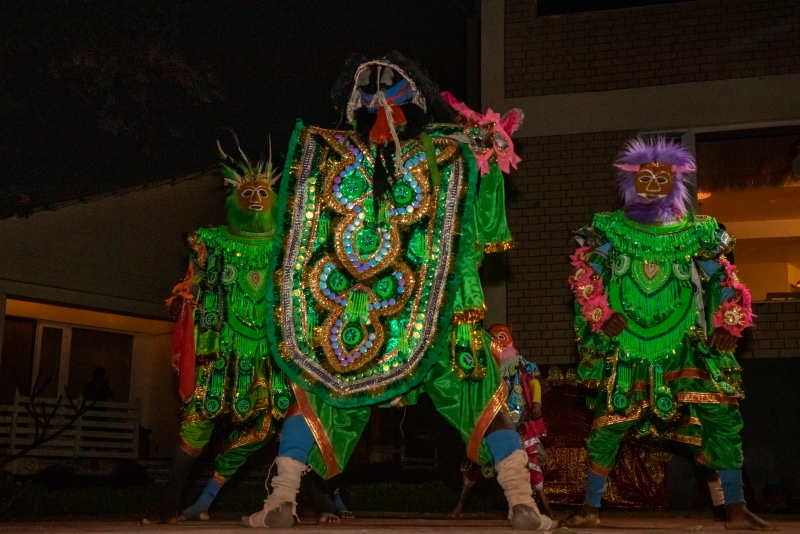
Apart from the entire story of Ramayana, the most frequently adopted themes are Mahishasurmardini and Kiratajunya. Some other themes are Sitaharan, Ravana Badh, Abhimanyu Badh, Hiranyakashipu Badh, Kumbha-Nikumbha Badh etc. All of them are based on a war between good and evil, between God and demons.
Mahishasur Badh or Mahishasuramardini depicts the story of how Goddess Durga kills the demon Mahishasura and eventually the good prevails over the evil. Whereas Kiratujanya is based on the story where Arjuna, the character from Mahabharata, got the Pasupati Astra from God Shiva after a brisk fight between them where Shiva appeared in the disguise of a mountain-dwelling hunter Kirata.

Purulia Chau Dance Performance
Purulia Chau Dance performances are usually performed on the ground; no raised platforms are used. And traditionally, they are usually performed after dark. The dancing enclosure is circular. All the musicians sit together in one corner, and the rest of the place is left for artists. There is usually a wide entrance so that characters can enter unhindered with their large masks and costumes. The audience gathers around the circular arena with provision for women to sit on a higher platform with their kids.
Traditionally. Chau dance should start around 10 pm and continue throughout the night. The performance will linger on sometime after the sunrise. And the entire story of Ramayana is performed over a few subsequent nights. But nowadays, after the adaptation of isolated scenes of the epics, the performances are curtailed to a duration of 1.5-2 hours continuous.
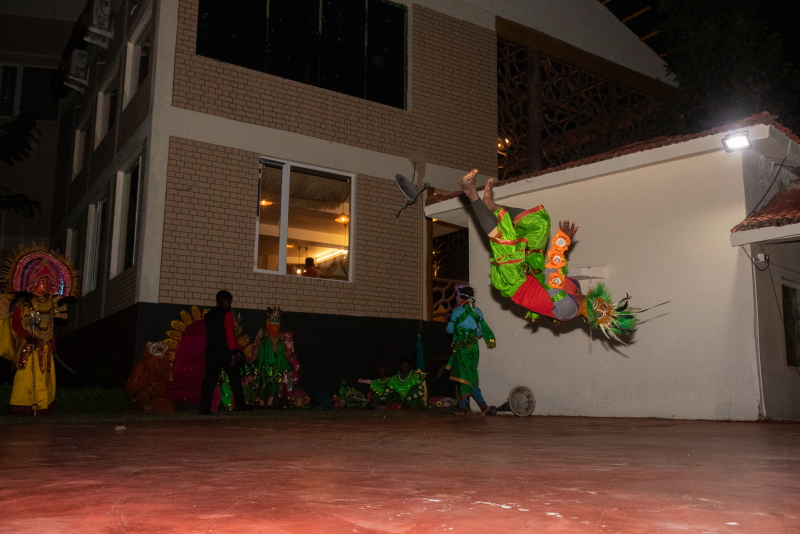
The show starts with reverberating sound of Drum with an invocation of Lord Ganesha by a woman played by a male character. Then the musicians build towards a crescendo using Dhamsa and Dhol, whereas flutes and Sanai hold the notes with melody. The first few minutes after Ganesha Bandana, the characters of the story introduce themselves with acrobatic movements and vibrating sounds in the background. Then the main performance begins.
The demons always jump more and do more acrobatic movements before they get defeated. On the contrary, the Gods and Goddesses are more concerned with their larger than human images. So, they move in a smooth synchronised manner, with dignity. The animal characters are portrayed as seen, and the chals are copied from the actual movements by the animals. In Purulia Chau, this animal chal or movements are more of jumping, twisting and vigorous shaking.
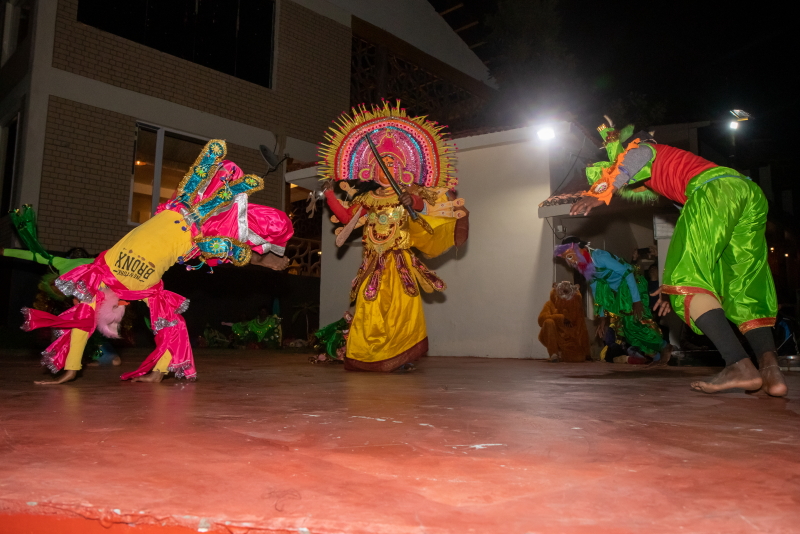
The main part of the story usually lasts for 30-45 minutes, whereas characters move around the arena and engage in movements to show power and virility for the same duration before the actual performance starts. Eventually, the good dominates the evil, and the story ends.
The voiceover and the supporting songs are performed by the main musician playing the drum and setting the tune. Play of light does not have any role in Purulia Chou, and it is used only to highlight the open ground where the performance is getting staged.
Purulia Chau Dance Costume
The costumes of Chau Dance are loose in fitting and of vibrant colours to catch the attention. The costumes of Gods and Goddesses are yellow, blue, red, green and white colours whereas that of demons are of black or brown colours. The dresses are full sleeves, and some have embroidery works over them made of tinsel and imitation pearls. The designs have no religious or sectarian motifs.
Costumes of deep-yellow or deep-green colour are preferred for Gods and Goddesses. Durga, the Mother Goddess, wears a magnificent ornamental diadem on a deep red base. Kali has a special dress appropriate to her character, a jet black in colour and tightly fit, matching her body colour. Shiva wears only a loincloth that resembles the skin of a tiger. And the demons wear dresses deep-red or jet-black in colour.
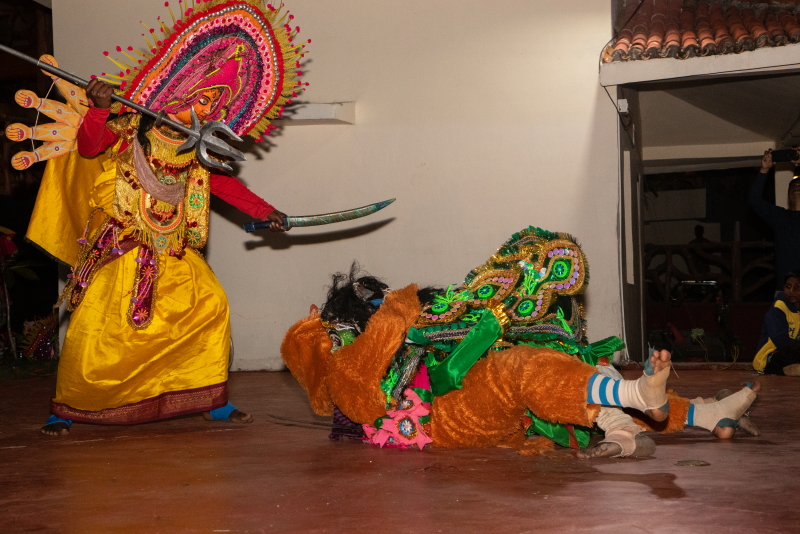
Role of Chau Masks
Chau masks and headgears have a pivotal role in Purulia Chau dance. Seraikella Chau dance uses maks too, but they are less characteristic and smaller in size and lighter. In contrast, Purulia Chau masks, made in Charida, are larger and heavier. They are full of decorations and customised as per the character of the themes.
Asuras masks are grotesque looking with large open mouths, hairs over the face, thick eyebrows with prominent expressions meaning prominent facial muscles. In contrast, masks of Gods and Goddesses have a divine look with smiling faces and minimal emotions. Masks for human characters like rishis and tribal man and woman are in between the above two. They have wrinkles in the head, a closed mouth, toned facial muscles and a curious gaze.
The mask of Ravana has ten heads; the mask of Ganesha is shaped like an elephant trunk. The masks of Gods and Goddesses are decorated with peacock feathers, embroidery work, jute works, wool, plastic flowers and beads.
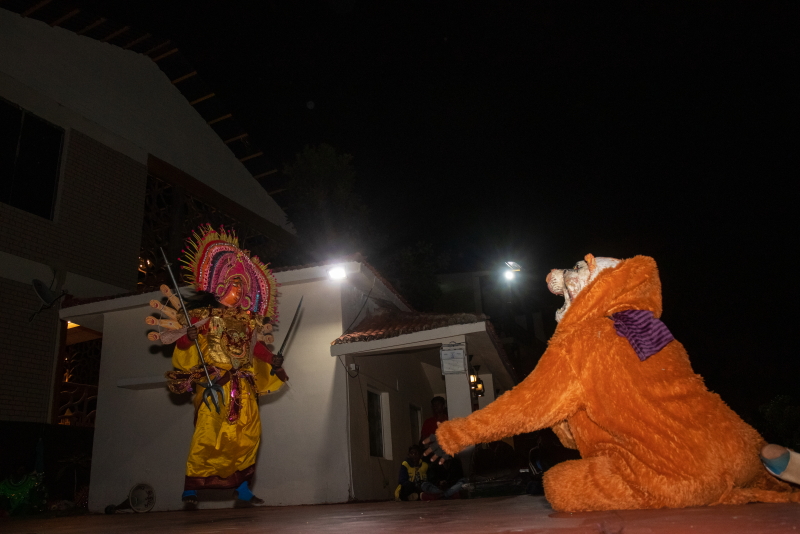
Chau Dance Festival
Every year a village festival is organised by the Chau dancers committee in different blocks of Purulia, known as the Chau-Jhumur Festival. The West Bengal State Government, the biggest patron of Purulia Chau Dance, promotes this festival heavily. Apart from the locals, many tourists gather to witness the dance performances on an open stage at the festival ground.
Recognitions of Purulia Chau
Chau Dance is included in UNESCO’s Representative List of the Intangible Cultural Heritage or Humanity since 2010. Chau masks of Purulia is registered under Geographical Indications.
Notable Personalities of Purulia Chau Dance
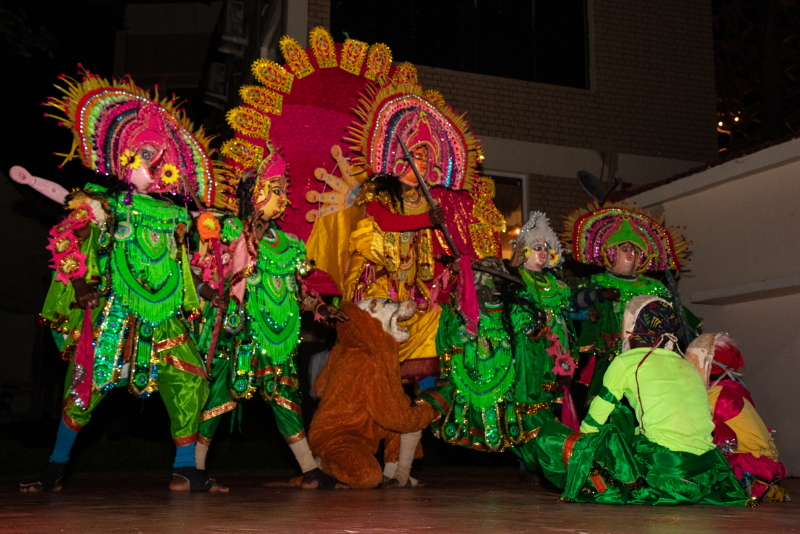
Book your trip: Resources
- Flight
Use Skyscanner or Google Flights to book your flight.
- Accommodation
Tripadvisor and Agoda are perfect for booking your hotel. If you want to stay in a hostel, then Hostelworld would greatly help you find one at your convenience.
- Travel Insurance
World Nomads is perfect for travel insurance. You can get comprehensive protection from them. Let them take care of unexpected situations while you concentrate on your trip.
- Package Tour and Activities
You can book a package tour from G-Adventures and Viator. They are a reputed company arranging small group tours and customising them per your requirements. You can also use Get Your Guide to book your private transport, city tours, heritage walks, food walks and other experiences like a cooking lesson or a Yoga session.
Disclosure: Some of the links below are affiliate links. You will be directed to another third-party website when you click those links. If you purchase anything via those links, I will earn a referral bonus without any extra cost to you.
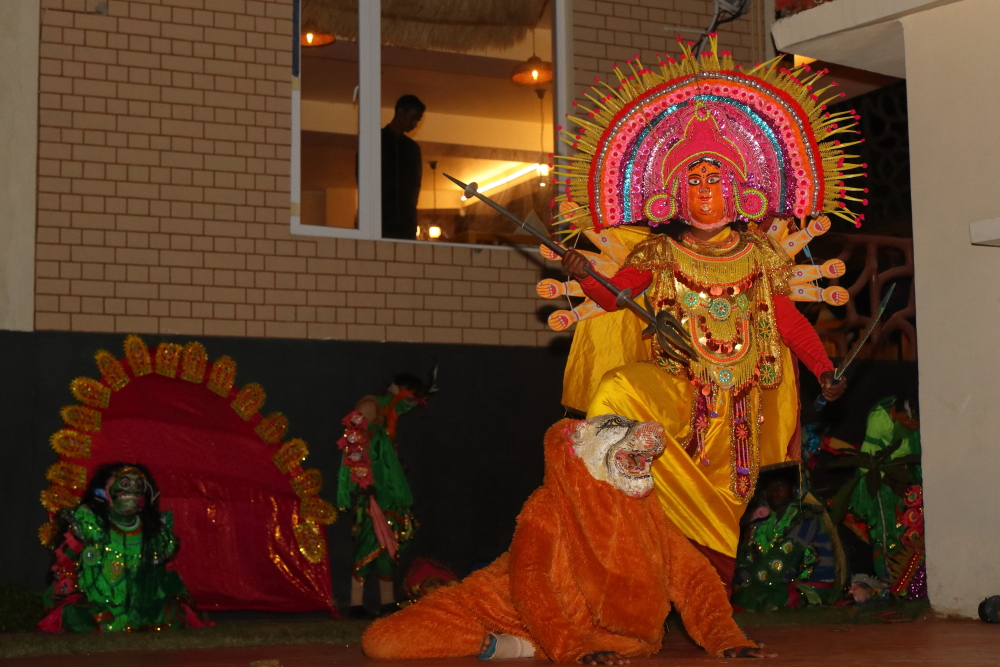

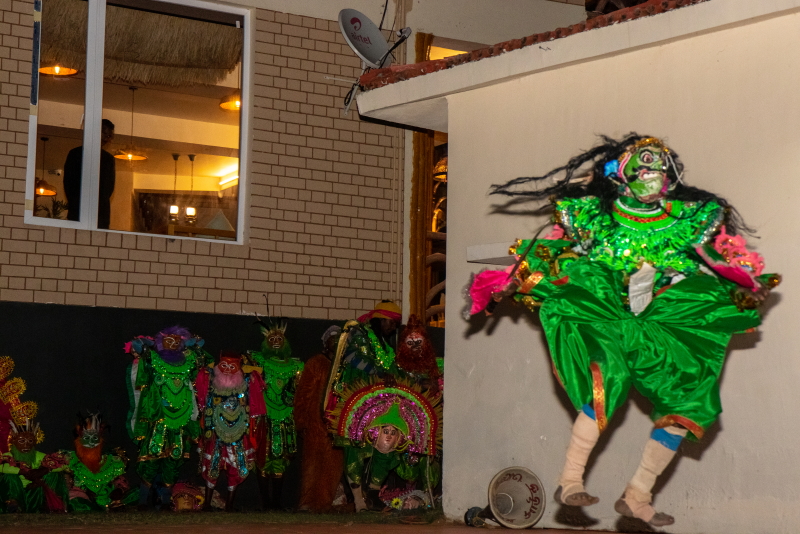
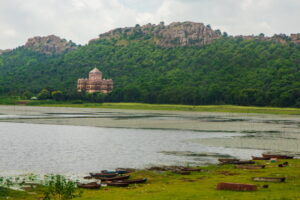
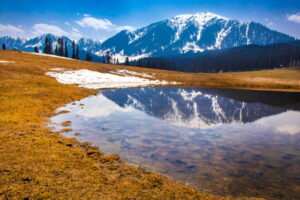
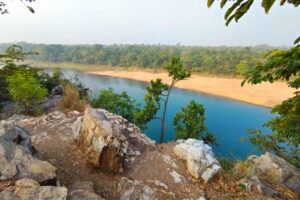
Pingback: Trip to Ayodhya Hills in Purulia | A Perfect Weekend Destination from Kolkata
Pingback: A Visit to Charida - The Village of Chau Mask Makers - My Travel Frames